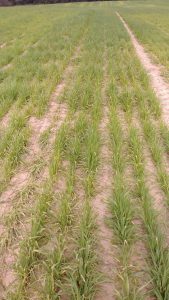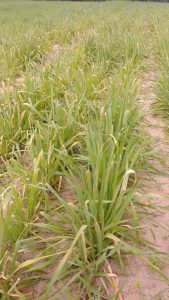Introduction
Recent freezing night temperatures have caused frost damage on a number of cool season crops planted in Florida. Even cold tolerant crops can be effected by low/freezing temperatures if those temperatures are sustained for a long enough period. The severity of damage will depend on how long temperatures remain below freezing.
What to Look For
Frost damage on a field wide scale will often be randomly scattered throughout the field or in association with low-lying areas. Soil type can have a significant effect on frost damage as well. In general, areas with more organic matter (OM) or plant residue will retain moisture and subsequently stay warmer longer. Cold damage is more prevalent in extremely sandy soils as they do not retain heat as well as soils with high OM.

Frost damage on the plant typically occurs on the outermost leaves or plant parts. Leaf tips or whole leaves will turn yellow/white and eventually brown before dying. Be sure to scout fields thoroughly after a frost as the damage can lead to subsequent infections from fungal and bacterial plant pathogens. Cold temperatures will slow a plant’s metabolism and it may take much longer for the effects of a fertilizer treatment to be visible (greener plants). Slow growth, chlorosis, and stunting are all symptoms of cold temperatures. If you are not certain what is causing your plant symptoms, consider submitting samples to the Plant Disease Diagnostic Clinic at the University of Florida.

Management
There is not much that can be done to mitigate the damage caused by frost on a large commercial field. If the crown of the plant is not harmed, it will likely grow out of the stress condition when temperatures return to a more favorable level. If irrigation is available it can be used after a frost to ensure that plants do not dry out if the available soil water is frozen. Irrigating plants before a frost can also help protect them against frost damage. This is a process called ice nucleation and is more common with higher value crops like blueberry.
 1
1
